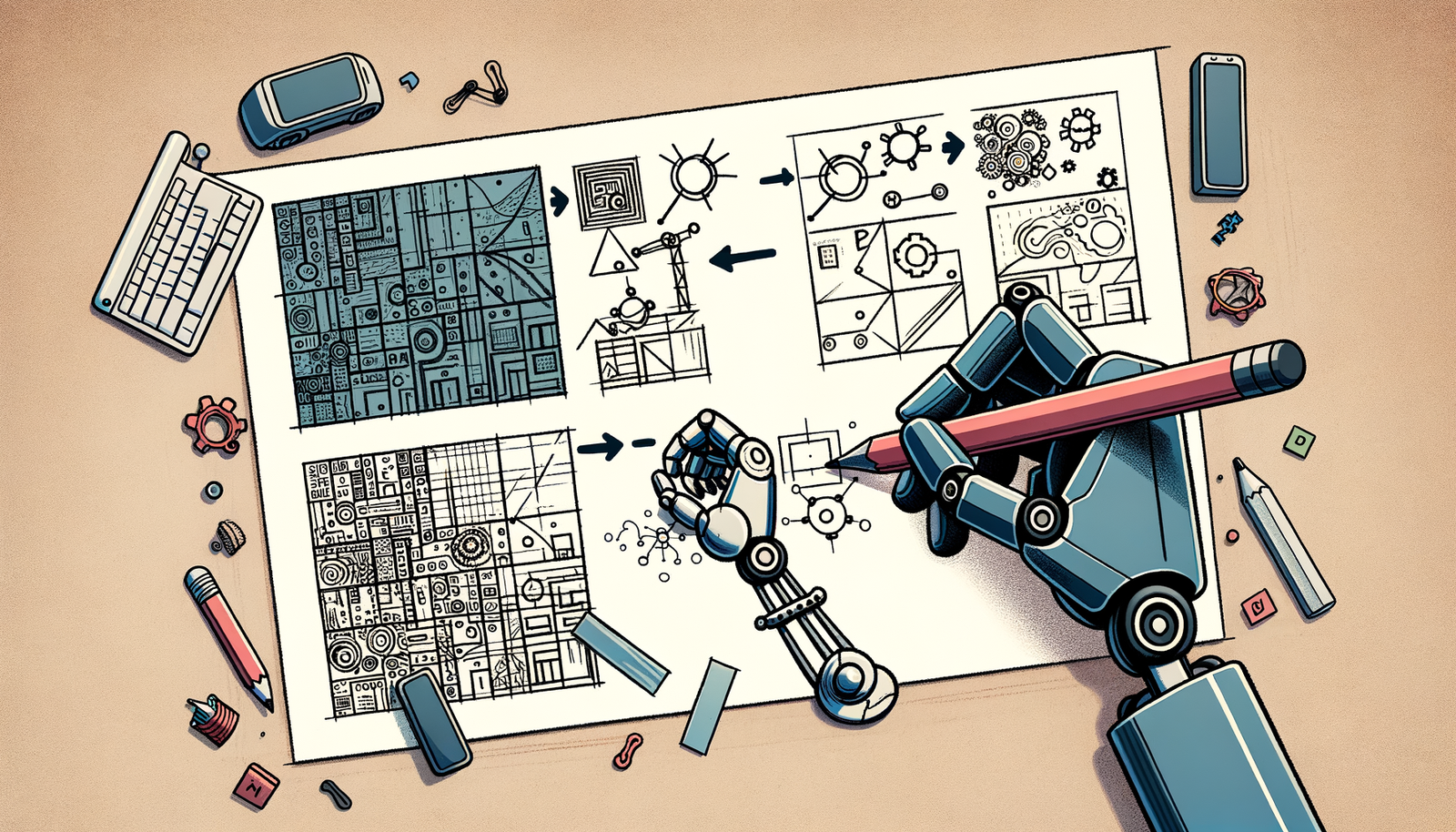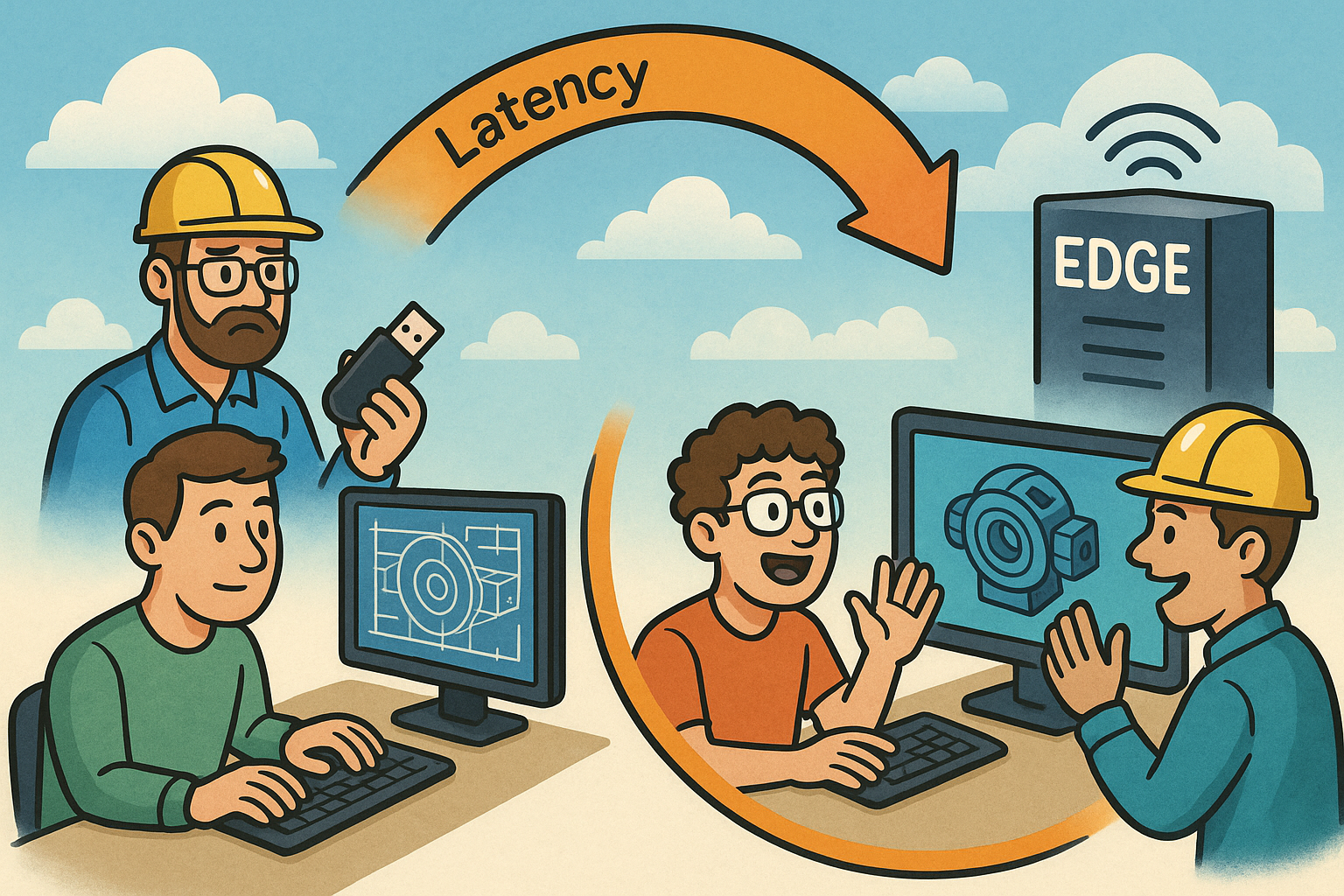Your Cart is Empty
Customer Testimonials
-
"Great customer service. The folks at Novedge were super helpful in navigating a somewhat complicated order including software upgrades and serial numbers in various stages of inactivity. They were friendly and helpful throughout the process.."
Ruben Ruckmark
"Quick & very helpful. We have been using Novedge for years and are very happy with their quick service when we need to make a purchase and excellent support resolving any issues."
Will Woodson
"Scott is the best. He reminds me about subscriptions dates, guides me in the correct direction for updates. He always responds promptly to me. He is literally the reason I continue to work with Novedge and will do so in the future."
Edward Mchugh
"Calvin Lok is “the man”. After my purchase of Sketchup 2021, he called me and provided step-by-step instructions to ease me through difficulties I was having with the setup of my new software."
Mike Borzage
AI-Driven Evolution in 2D to 3D Design Conversion
March 19, 2025 6 min read


Introduction to 2D to 3D Design Conversion
In today's rapidly evolving design landscape, both 2D and 3D designs play pivotal roles across a multitude of industries. From the initial sketches in architecture to intricate product designs and immersive gaming environments, the transition from two-dimensional representations to three-dimensional models has become essential. This shift not only enhances visual understanding but also facilitates better communication among stakeholders, enabling more precise execution of projects. The benefits of transforming 2D sketches into 3D models are manifold, including improved accuracy, the ability to identify potential issues early, and the opportunity to experience designs in a virtual space before committing resources to physical prototypes.
However, traditional methods of converting 2D designs to 3D models come with their own set of challenges. The processes are often time-consuming, requiring meticulous attention to detail and significant manual effort. This approach increases the potential for human error, which can lead to costly mistakes and revisions down the line. Additionally, as designs become more complex, the scalability of manual conversion methods becomes limited, making it difficult to keep up with the demands of modern projects. These obstacles have highlighted the need for more efficient solutions that can handle complexity without compromising on quality or accuracy.
The emergence of artificial intelligence (AI) in design automation offers a promising solution to these challenges. AI technologies, such as machine learning and computer vision, have the potential to revolutionize the way designers approach the conversion process. By leveraging AI-driven tools, designers can automate repetitive tasks, reduce errors, and focus more on the creative aspects of their work. These tools can interpret complex patterns, recognize design elements, and generate accurate 3D models from 2D inputs with remarkable speed and precision. The advantages of AI-driven tools over manual methods are significant, offering not just efficiency but also the ability to handle intricate designs that would be cumbersome to process manually.
AI Technologies Facilitating 2D to 3D Conversion
At the core of AI-powered design conversion are sophisticated machine learning algorithms that enable computers to learn from data and improve over time. Deep learning models, a subset of machine learning, are particularly adept at pattern recognition, which is essential for interpreting complex 2D designs and generating corresponding 3D models. These models are trained on extensive datasets that include a wide variety of design examples, allowing them to recognize and replicate intricate details with high accuracy. The quality and diversity of the training datasets are crucial, as they directly impact the model's ability to handle different styles and complexities in design.
Computer vision techniques also play a vital role in the AI-assisted conversion process. By employing advanced image processing algorithms, AI tools can analyze and interpret visual information from 2D drawings. This involves identifying edges, shapes, textures, and other features that define the design. Computer vision enhances the detail and accuracy of the generated 3D models by ensuring that all relevant aspects of the 2D input are captured and translated appropriately. This technology enables the automation of tasks that previously required manual intervention, such as scaling, aligning, and correcting distortions in the original drawings.
Another significant contributor to AI-driven design conversion is the integration of Natural Language Processing (NLP). NLP allows AI tools to understand and interpret textual information accompanying designs, such as annotations, specifications, and design intent descriptions. By translating this information into actionable 3D features, NLP facilitates a deeper understanding of the designer's vision. This integration enhances communication between designers and AI tools, enabling more accurate and customized outputs. It also allows designers to interact with AI systems using natural language commands, making the tools more accessible and user-friendly.
Key AI Tools and Software Solutions
The market has seen the emergence of several leading AI-powered conversion tools that are transforming the way designers work. These tools offer a range of features and capabilities designed to streamline the conversion process from 2D to 3D. Common features include automated detection of design elements, real-time rendering, support for multiple file formats, and integration with existing design software. Some tools also offer cloud-based services, allowing for collaborative work environments and access to powerful computational resources without the need for extensive local hardware.
When considering different AI-powered conversion tools, it's essential to understand how they compare in terms of performance, ease of use, and compatibility. Factors to consider include the accuracy of the conversion, the speed of processing, the learning curve for new users, and the level of support provided by the developers. Compatibility with popular CAD and design software is particularly important, as it ensures that the tools can be integrated seamlessly into existing workflows. Designers should evaluate how well a tool aligns with their specific needs and whether it can handle the complexity of their projects.
Integration with existing design workflows is a critical factor in the adoption of AI tools. Seamless compatibility with popular CAD and design software allows for a streamlined process, where the transition from 2D to 3D can occur within the current systems used by designers. This integration minimizes disruptions and facilitates a smoother learning curve for teams adopting new technologies. By embedding AI tools into established workflows, organizations can leverage the benefits of automation and advanced analytics without overhauling their entire design process. This approach ensures that the focus remains on enhancing productivity and creativity rather than managing technical challenges.
Future Trends and Implications
Advancements in AI and machine learning are set to further enhance the capabilities of design conversion tools. Predictive enhancements, powered by more sophisticated algorithms, will enable tools to anticipate design elements and suggest improvements proactively. Emerging technologies like generative adversarial networks (GANs) and reinforcement learning are expected to shape future tools, offering even greater accuracy and efficiency in conversions. These advancements will allow for more complex and nuanced designs to be handled with ease, opening up new possibilities for innovation and creativity in the design process.
The impact of AI on the design industry extends beyond just the tools themselves. As AI becomes more integrated into design processes, there will be changes in design roles and the skill sets required. Designers may need to develop new competencies in working alongside AI, such as understanding how to guide AI tools and interpret their outputs. However, this evolution also presents the potential for increased creativity and innovation, as designers can focus more on conceptual aspects and less on repetitive manual tasks. The collaboration between human creativity and AI efficiency holds the promise of pushing the boundaries of what is possible in design.
With the growth of AI in design, ethical considerations and challenges must be addressed. Data privacy and intellectual property concerns are paramount, as AI tools often rely on large datasets that may include sensitive information. Ensuring that these tools handle data responsibly is essential to maintain trust and compliance with regulations. Additionally, there is a need to ensure accessibility and fairness in AI tool deployment. This includes making sure that the benefits of AI technologies are available to designers across different regions and industries, and that biases in AI algorithms are identified and mitigated. Addressing these ethical challenges is crucial for the sustainable and equitable advancement of AI in design.
Conclusion
In summary, AI is playing an increasingly transformative role in the conversion of 2D designs to 3D models. The integration of machine learning, computer vision, and NLP technologies has addressed many of the challenges associated with traditional conversion methods. By automating time-consuming processes and reducing the potential for human error, AI-driven tools have enhanced efficiency and accuracy in the design workflow. The advantages of adopting these technologies are clear, offering designers the ability to handle complex projects with greater ease and focus more on innovation.
Looking to the future, the sustained impact of AI on various industries is evident. As AI technologies continue to advance, we can expect further enhancements in the capabilities of design tools. This includes more accurate predictive features, better integration with emerging technologies, and even more seamless workflows. The ongoing development of AI in design holds the promise of unlocking new levels of creativity and productivity, changing the way industries approach design and development.
For designers and organizations, the call to action is clear: embracing AI tools is essential to stay competitive in the evolving landscape. This means not only adopting new technologies but also investing in continuous learning and adaptation. By staying informed about the latest advancements and cultivating skills that complement AI capabilities, designers can maximize the benefits of these tools. Organizations should support this growth by providing resources and training, fostering an environment that encourages innovation and collaboration between human talent and AI.
Also in Design News

Live Performance Budgets: Real-Time Cost, Carbon, Energy and Lead-Time in CAD/BIM
December 11, 2025 14 min read
Read More
Design Software History: From File-Shuttling to Edge: The Latency Evolution of Collaborative CAD and Real-Time Visualization
December 11, 2025 13 min read
Read More
Cinema 4D Tip: Cinema 4D Soft Body Quick Setup & Parameter Tuning
December 11, 2025 2 min read
Read MoreSubscribe
Sign up to get the latest on sales, new releases and more …


